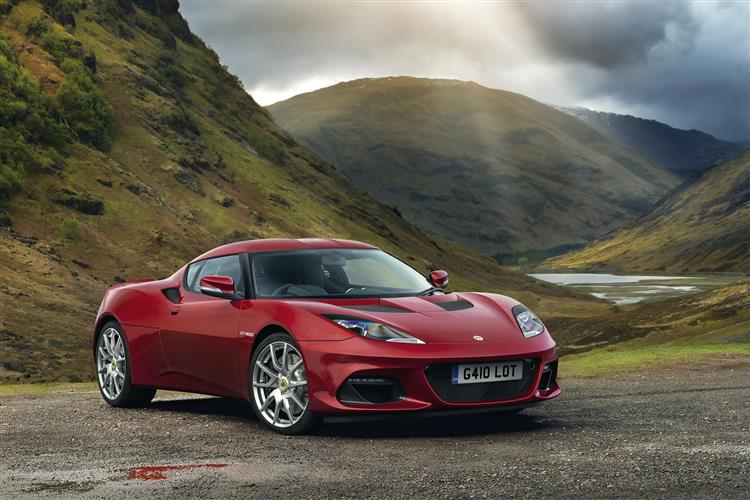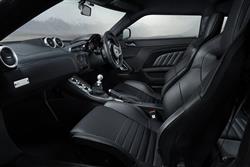A MORE CREDIBLE LOTUS POSITION (some text hidden) --NONE--
By Jonathan Crouch
Introductionword count: 57
Back in 2009, the Evora was the car charged with broadening Lotus' customer base to include the kind of people who'd pay serious money for a serious German sportscar. To make an impact, it had to match quality and comfort with the traditional exhilarating Lotus driving experience. It did. Here's the info on buying a used one.
Modelsword count: 8
(3.5 V6 supercharged petrol [standard,S,GTE,GT410,GT430,390 Sport,420 Sport,430 Cup])
Historyword count: 304
Back in 2009, it had been a long time since we'd had a Lotus to properly take on Porsche and the most serious of its sportscar German rivals. Since the demise of the Esprit back in 2003, the Norfolk maker had sold us Elise-based track day toys - cars you used on high days and holidays - but little else. The Vauxhall-engined Europa of 2007 was a first attempt to produce an everyday sportscar, but wasn't really a credible contender: this car was. The Lotus Evora. From launch, it was the world's one and only mid-engined 2+2 sportscar. Delivering the perfect handling balance you only get with a mid-engined configuration and combining it with the practicality of two small rear seats had in 2009 proved to be beyond everyone but the engineers from Hethel managed it, combining this with traditional Lotus attributes of lightness, suppleness and total driver involvement. All Evoras use a supercharged 3.5-litre Toyota V6 engine. From launch, only a straightforward 280hp version of this was available with a 6-speed manual gearbox, but in 2010, an Evora S model with an uprated 350hp version of this powerplant arrived. Plus Lotus introduced the option of an IPS auto gearbox. Various special editions were subsequently introduced, the most sought-after being the GTE model (only six of which were made in right hand drive, with 16 manufactured in left hand drive). Lotus continued to work on the mainstream Evora range too. The standard and S models were replaced by faster GT410 and GT430 variants, which arrived in 2017 with 410 and 430hp respectively. The GT430 lasted only until 2019 but the GT410 was made all the way to the end of production in 2021. The final production run was based around three 'Final Edition' variants, the '390 Sport', the '420 Sport' and the '430 Cup'.
What You Getword count: 402
The Evora's designers had the unenviable task of reconciling the need for a bewitching exterior with the car's 2+2 seating configuration and the stringent requirements of modern crash tests. The result was an elegantly proportioned car that lacked the curvy aggression of the Elise but still managed to look taut and purposeful. The real innovation lay beneath the bodywork where the firm's extruded aluminium Variable Vehicle Architecture was employed to reduce weight and maximise rigidity. Under this design, the roof and body panels were stress-bearing and attached directly to the chassis helping the Evora achieve its modest kerb weight. This car's packaging was also noteworthy. Its wheelbase was only slightly longer than Lotus' little Elise but it managed to cram in its mid-mounted V6 engine along with rear seats that, Lotus insisted, were large enough for passengers of up to five feet in height. You'll probably prefer to restrict their use to small children on short journeys or uncomplaining friends desperate for a lift home from the pub. Or perhaps, do without the rear berths completely by finding a car whose original owner specified the 2-seater-only 2+0 version. Going that route would offer you a bit more luggage space. With the 2+2 version, there's a necessarily compact 160-litre boot that's said to be capable of carrying a set of golf clubs, but a visual appraisal of the space suggests you may have to melt them down and pour them in. A couple of soft sports bags should be fine though. At least the interior of the car looks spacious and sitting in this car really feels like an event. Certainly, the standard of build and cabin design is a major departure from the stripped down feel Lotus has become known for, if not quite Porsche quality. There's a tasteful two tone effect to the leather-trimmed fascia, though the dials do suffer from reflections in strong sunlight. You'll also have to squint a bit to see out of the tiny rear window, which makes finding a car whose original owner paid extra for parking sensors near-essential. Still, the driver's seat is supportive and the wheel adjusts for both reach and rake, so it should be possible for just about anyone to get comfortable. Getting in and out, always a Lotus issue, should be relatively straightforward too, thanks to a driving position that's 65mm higher than the Elise, plus lower sills and taller doors.
To see the full road test text contact us on 0330 0020 227
Pictures (high res disabled)

.jpg)
|
.jpg)
|
.jpg)
| |||
.jpg)
|
.jpg)
|
.jpg)
| |||
.jpg)
|
.jpg)
|

|
Scoring (subset of scores)
Category: Sporting Cars
| Performance | |
| Handling | |
| Comfort | |
| Space | |
| Styling, Build, Value, Equipment, Depreciation, Handling, Insurance and Total scores are available with our full data feed. | |



